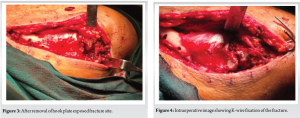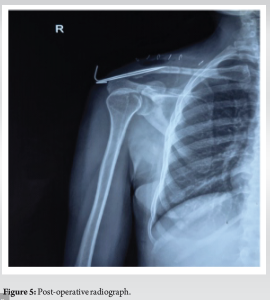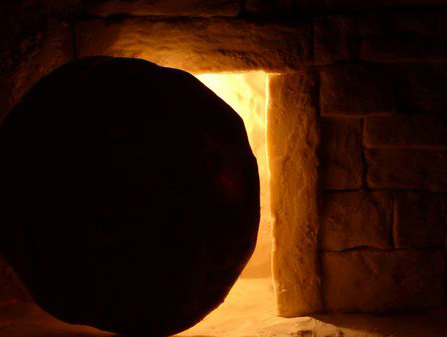Accurate hardware placement is crucial in orthopedic surgeries, especially for hook plate fixation of lateral clavicle fractures, as surgeon errors can lead to complications, highlighting the importance of meticulous preoperative planning and imaging; minimally invasive K-wire fixation provides an effective and cost-efficient solution to address such issues
Dr. Sunit Kumar Pani, Department of Orthopaedics, Institute of Medical Sciences and SUM Hospital, Siksha O Anusandhan University, Bhubaneswar, Odisha, India. E-mail: pani.sunit@gmail.com
Introduction: Hook plate fixation is a widely used technique for managing lateral clavicle fractures, particularly when the coracoclavicular ligaments are disrupted. However, improper placement of the hook plate can result in rare and challenging complications that require innovative management strategies. This report presents a unique case involving such a complication and describes a minimally invasive, single-stage salvage approach using K-wire fixation to effectively address the issue.
Case Report: A 45-year-old female presented with pain and restricted shoulder function due to a hook plate positioned incorrectly at the fracture site rather than in the acromioclavicular joint. The mispositioned plate was carefully removed, and the fracture was stabilized using K-wire fixation.
Results: At the 6-month follow-up, the patient had excellent functional recovery with a Constant–Murley score of 89 and complete radiographic union at the fracture site.
Conclusion: This case highlights a rare issue that can occur when a hook plate is not placed correctly. It shows how important it is to position hardware accurately. The case also illustrates how a minimally invasive technique, using K-wire stabilization, can effectively manage these types of complications.
Keywords: Hook plate, clavicle, K-wire.
Clavicle fractures are common orthopedic injuries, comprising 2.6–5% of adult fractures and 35–45% of shoulder girdle injuries [1, 2]. Their complexity has led to numerous classification systems to aid treatment and predict outcomes. Allman introduced one of the earliest classification systems for clavicle fractures in 1967 [3], dividing the bone into medial, middle, and lateral thirds. Although middle-third fractures are the most common, lateral-end fractures (Group II) are more complex due to the involvement of the coracoclavicular ligament (CCL) and the acromioclavicular (AC) joint, often requiring specialized management. Neer emphasized the displacement risks of lateral-end clavicle fractures due to CCL involvement [4, 5]. Fractures with CCL disruption, such as Type 2 fractures, commonly exhibit significant displacement due to loss of ligamentous support, while fractures without ligament detachment tend to remain stable. Lateral clavicle fractures are challenging to manage due to their unstable nature, especially when the CCLs are disrupted. Minimally displaced fractures, stable fractures with intact CCLs, or patients with low functional demand have often been treated with conservative measures. Displaced fractures however need surgical. The various surgical management options include hook plates, locking plates, and suspensory fixation wires [6-8]. Hook plate fixation is a widely used technique for managing these fractures, ensuring stable alignment [9]. However, incorrect placement can lead to complications such as mechanical irritation, non-union, or hardware failure [10-12]. This case report describes a unique complication involving the mispositioning of a hook plate directly at the fracture site, leading to mechanical issues and dysfunction. A single-stage salvage approach using K-wire fixation was employed, emphasizing the importance of proper placement and anatomical accuracy.
A 45-year-old female presented 2 weeks after her index surgery for fracture lateral end clavicle with persistent pain, limited shoulder mobility, and significant discomfort during daily activities. Physical examination revealed tenderness over the lateral clavicle and reduced shoulder range of motion. Radiographs confirmed improper placement of the hook plate directly within the fracture site (Fig. 1). The patient was made aware of the situation and was advised to undergo implant removal and fracture fixation. Under general anesthesia, the patient was positioned supine, and the pre-existing sutures at the fracture site were removed from the incision site of the index surgery. Dissection was carried out in the same plane, and a hook plate was identified lodged at the fracture site (Fig. 2). The mispositioned hook plate was removed (Fig. 3). To achieve stable fixation, two percutaneous K-wires were inserted from the acromion to the distal clavicle (Fig. 4). Intraoperative fluoroscopy confirmed the correct placement.

The patient’s arm was immobilized for 3 weeks in a sling, followed by passive pendulum shoulder exercises as tolerated by the patient. Post-operative radiographs were taken on 2nd post-operative day, and she was discharged (Fig. 5). K-wires were removed under local anesthesia at 4 weeks.
At the 6-month follow-up, radiographs confirmed complete fracture healing. The patient regained near-full shoulder function with a Constant–Murley score of 89. The cosmetic outcome was acceptable, and the patient reported high satisfaction with the procedure.
Although effective for stabilizing lateral clavicle fractures, hook plate fixation is associated with complications that can significantly impact outcomes [9, 10]. In this case, the unique complication of a hook plate being misjudged and placed directly at the fracture site rather than in the AC joint has not been previously reported. This rare occurrence highlights the difficulties surgeons can encounter when anatomical landmarks are hard to identify or not clearly visible during surgery. While complications are inherent to surgical procedures, surgeon-related errors such as this one are largely preventable. Accurate preoperative planning, intraoperative imaging, and a clear understanding of the anatomy are critical for avoiding such mistakes. This case highlights the importance of these measures in ensuring proper hardware placement and reducing the risk of complications. When faced with such a complication, a tailored approach is essential. The minimally invasive, single-stage salvage procedure using K-wire fixation provided a cost-effective solution that addressed the issue without requiring extensive additional surgery. K-wire fixation has been used in managing lateral clavicle fractures as it offers stable fixation while being less invasive than other methods [13, 14]. However, its use requires careful monitoring to prevent risks such as wire migration or infection, which were effectively managed in this case [6, 15]. Although such complications are extremely rare, this case serves as a reminder of the potential for such complications to happen and the importance of active and focused surgical planning and execution. By sharing this experience, we aim to raise awareness of this issue and contribute to the broader understanding of managing complications in lateral clavicle fracture surgeries. Our approach involved using K-wires for stabilization, minimizing the need for future surgeries. This technique is particularly advantageous when economic constraints or patient apprehensions about hardware removal are present. The success of our case adds to the evidence supporting minimally invasive solutions for managing lateral clavicle fractures.
This case highlights the importance of accurate hardware placement in hook plate fixation for lateral clavicle fractures. It demonstrates how a minimally invasive salvage approach using K-wire fixation can effectively manage rare complications, ensuring successful outcomes.
Accurate hardware placement is critical in lateral clavicle fracture surgeries. Surgeons must exercise extreme care during hook plate fixation to ensure proper positioning in the AC joint. When complications concerning mispositioned plates arise, minimally invasive techniques like K-wire fixation can provide an effective salvage approach, offering a cost-efficient solution that can restore shoulder function and promote fracture healing.
References
- 1.Robinson CM. Fractures of the clavicle in the adult. Epidemiology and classification. J Bone Joint Surg Br 1998;80:476-84. [Google Scholar]
- 2.Postacchini F, Gumina S, De Santis P, Albo F. Epidemiology of clavicle fractures. J Shoulder Elbow Surg 2002;11:452-6. [Google Scholar]
- 3.Allman FL Jr. Fractures and ligamentous injuries of the clavicle and its articulation. J Bone Joint Surg Am 1967;49:774-84. [Google Scholar]
- 4.Neer CS 2nd. Fractures of the distal third of the clavicle. Clin Orthop Relat Res 1968;58:43-50. [Google Scholar]
- 5.Holder J, Kolla S, Lehto S. Clavicle fractures: Allman and neer classification. J Adv Radiol Med Image 2017;2:102. [Google Scholar]
- 6.Kim DW, Kim DH, Kim BS, Cho CH. Current concepts for classification and treatment of distal clavicle fractures. Clin Orthop Surg 2020;12:135-44. [Google Scholar]
- 7.Tiren D, van Bemmel AJ, Swank DJ, van der Linden FM. Hook plate fixation of acute displaced lateral clavicle fractures: Mid-term results and a brief literature overview. J Orthop Surg Res 2012;7:2. [Google Scholar]
- 8.Rao VN, Ravichandra V, Lavanya KM, Swamy CG. Management of lateral end clavicle fractures using lateral clavicle locking plate: A prospective study. Int J Res Orthop 2019;5:1045-50. [Google Scholar]
- 9.Beisemann N, Spiller YM, Schnetzke M, Grützner PA, Nolte PC. Hook plate fixation of Neer type II distal clavicle fractures results in satisfactory patient-reported outcomes but complications and revisions are high. BMC Musculoskelet Disord 2023;24:850. [Google Scholar]
- 10.Lopiz Y, Checa P, García-Fernández C, Valle J, Vega ML, Marco F. Complications with the clavicle hook plate after fixation of Neer type II clavicle fractures. Int Orthop 2019;43:1701-8. [Google Scholar]
- 11.Karthikeyan R, Thirunarayanan V, Elango B Complications of hook plate fixation in lateral-end clavicle fractures: A retrospective analysis. J Orthop Surg Res 2023;18:113. [Google Scholar]
- 12.Liu ZQ, Zhang MS, Zhou ZF, Zhang L, Zheng LP. Comparative study of three different fixation techniques for the treatment of Neer type IIb distal clavicle fractures: A retrospective cohort study. Front Surg 2023;10:1100720. [Google Scholar]
- 13.Eskola A, Vainionpää S, Pätiälä H, Rokkanen P. Outcome of operative treatment in fresh lateral clavicular fracture. Ann Chir Gynaecol 1987;76:167-9. [Google Scholar]
- 14.Varyani A. K-wire and screw fixation of lateral end clavicle fractures. J Evolution Med Dent Sci. 2016;5:6765-8. [Google Scholar]
- 15.Das P, Dutta A, Deka A. A prospective study on functional outcomes of displaced lateral end clavicle fracture treated with open reduction internal fixation with tension band wiring. IOSR J Dent Med Sci 2023;22:51-7. [Google Scholar]












